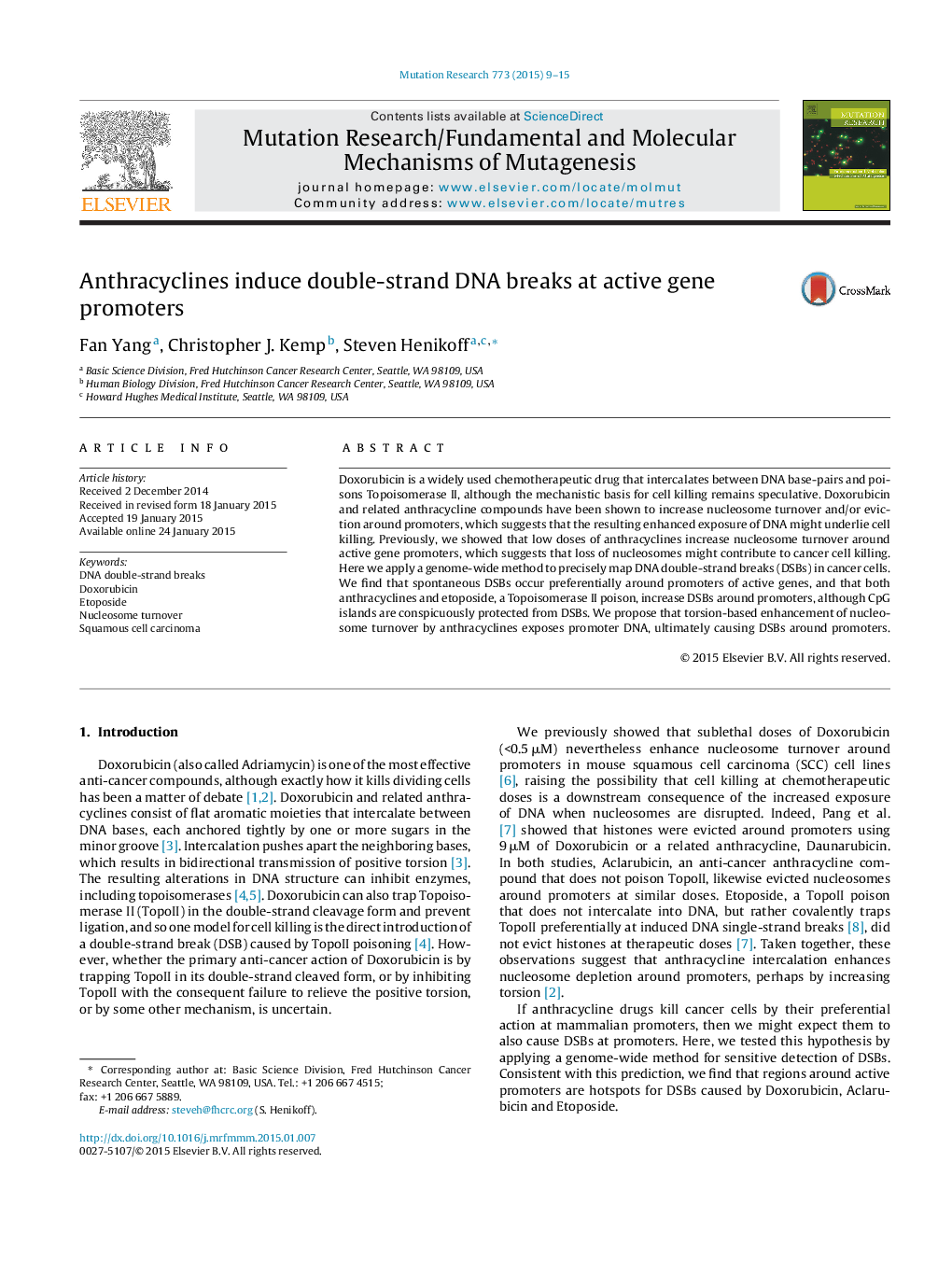| Article ID | Journal | Published Year | Pages | File Type |
|---|---|---|---|---|
| 8455726 | Mutation Research/Fundamental and Molecular Mechanisms of Mutagenesis | 2015 | 7 Pages |
Abstract
Doxorubicin is a widely used chemotherapeutic drug that intercalates between DNA base-pairs and poisons Topoisomerase II, although the mechanistic basis for cell killing remains speculative. Doxorubicin and related anthracycline compounds have been shown to increase nucleosome turnover and/or eviction around promoters, which suggests that the resulting enhanced exposure of DNA might underlie cell killing. Previously, we showed that low doses of anthracyclines increase nucleosome turnover around active gene promoters, which suggests that loss of nucleosomes might contribute to cancer cell killing. Here we apply a genome-wide method to precisely map DNA double-strand breaks (DSBs) in cancer cells. We find that spontaneous DSBs occur preferentially around promoters of active genes, and that both anthracyclines and etoposide, a Topoisomerase II poison, increase DSBs around promoters, although CpG islands are conspicuously protected from DSBs. We propose that torsion-based enhancement of nucleosome turnover by anthracyclines exposes promoter DNA, ultimately causing DSBs around promoters.
Related Topics
Life Sciences
Biochemistry, Genetics and Molecular Biology
Cancer Research
Authors
Fan Yang, Christopher J. Kemp, Steven Henikoff,
